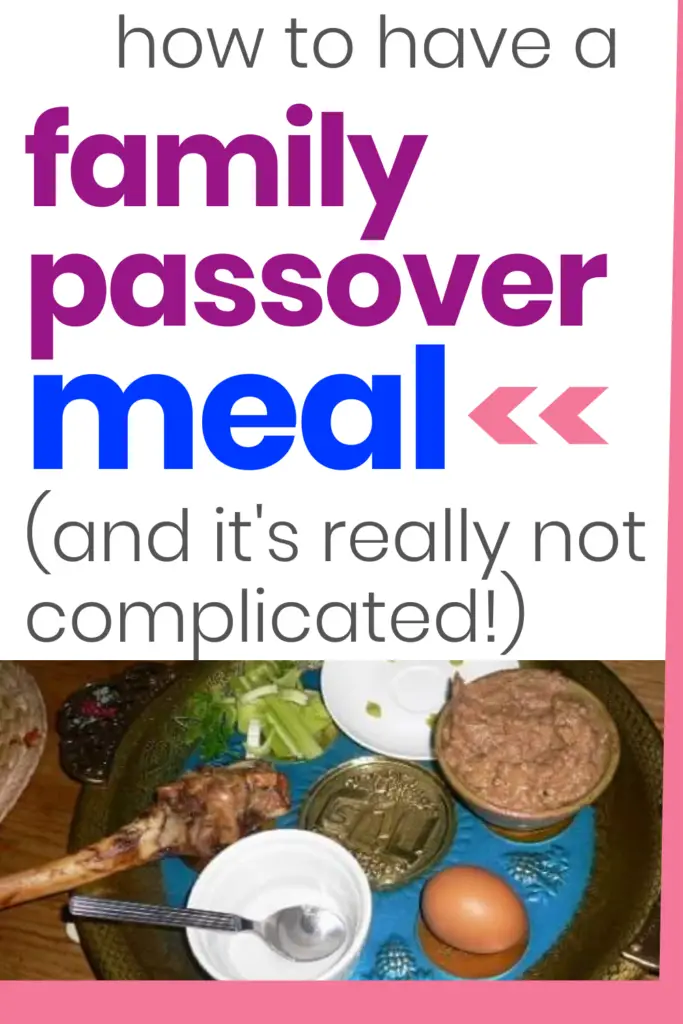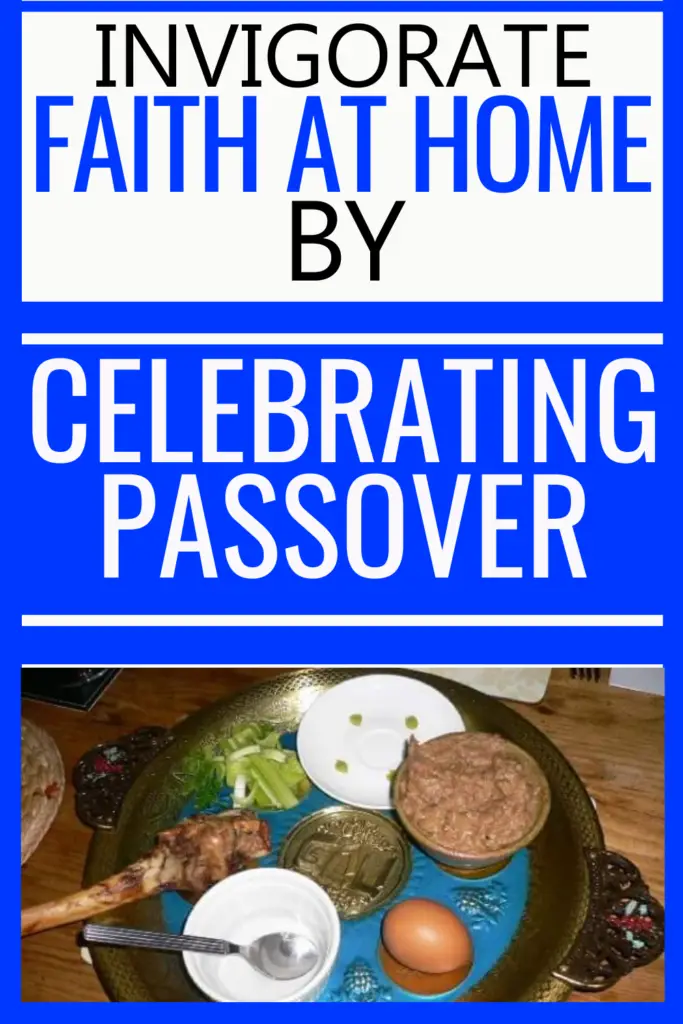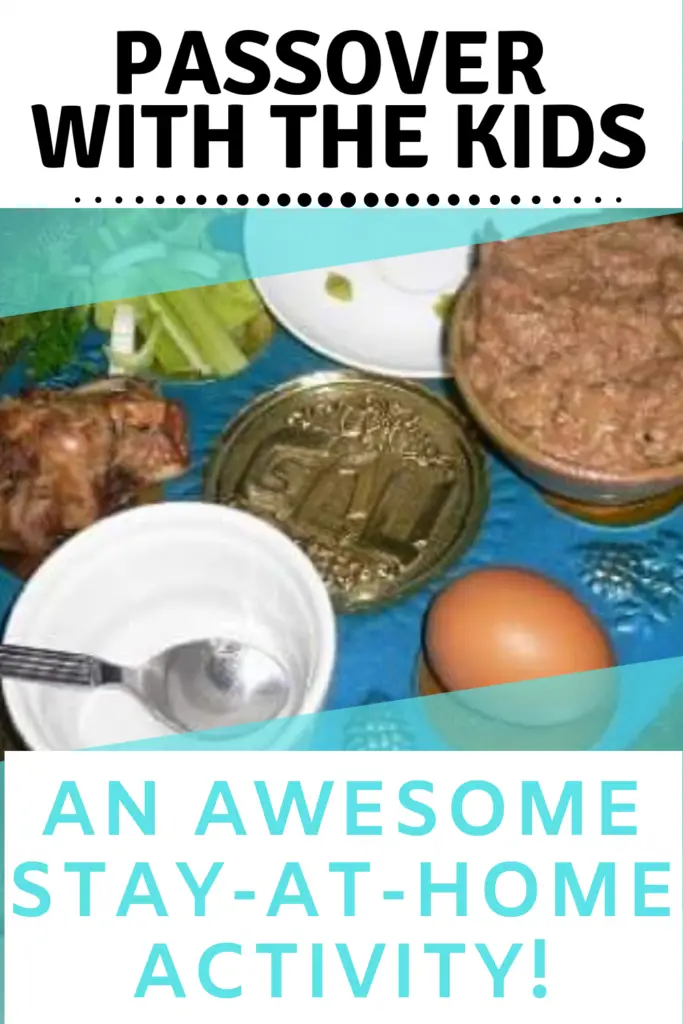I use affiliate links in some blog posts. If you click through and make a purchase, I earn a small commission at no extra cost to yourself. Thank you for your support.
I’m absolutely over the moon today to be welcoming one of my long-time heroes here on the blog! Victoria Beech (aka Mrs Godventure) is a mum, and highly experienced children’s worker, writer and speaker. She runs the Godventure website and writes the awesome Godventure resources, which I’ve mentioned here on the blog before.
If you haven’t come across Victoria or Godventure, you’re missing an absolute treat – they’re well worth knowing about when looking for excellent faith-building tools for families. (I’ve mentioned these resources in 30 Simple Lent Activities and 10 Best Family Devotionals.)
PLUS…celebrating a Passover meal is one of those things I’ve always wanted to do with my family and never got round to. So when Victoria suggested this guest blog on how to do Passover for children, I snapped her up on the offer!
Little did I know back then that we’d all now be having extra, enforced family time. So this seems a good way to spend some of it!
Do have a read, and follow the links to the resources she mentions. Above all: have fun celebrating God as a family this Easter!

Why would I celebrate Passover if I’m not Jewish?
Such a good question!
We’ve been celebrating Passover for over ten years now. I’ve often been asked: Are you Jewish?
The answer to that is: A little bit. My Grandad’s mother was a Jew, but the rituals weren’t passed down. Instead, we started celebrating Shabbat, a weekly ritual to begin our Sabbath day of rest, and that led on to exploring and celebrating Passover.
However, lots of Christians are starting to celebrate Passover. We are ‘adopted’ into the family God’s people, and celebrating Passover is one way of recognising the ancient story of God and His people which we are part of.
What is Passover?
Passover is an annual festival which God told His people to celebrate on the night that He set them free from being slaves in Egypt. He told them to put lamb’s blood on their door posts so that the angel of death (the tenth plague) would pass over their homes. He said they would leave Egypt that night and gave them the Passover festival as a way to remember this.
It’s commonly understood that Jesus’ ‘last supper’ was Passover, and the parallels between the death of the lambs and the death of Jesus only get deeper and more amazing the more I look at it!
For traditional Jews, Passover is a week festival, beginning and ending with feasts, but during the whole week they eat no unleavened bread, or any of five specified grains. The feasts are just that, big family gatherings with lavish food and a loooooong meal during which the ‘Hagadah’ takes place.
This is a set order for numerous rituals, including telling the Exodus story, drinking four cups of wine and eating symbolic food from the Seder Plate.

What would we get out of celebrating Passover?
That’s so hard to pin down, as there is such a richness which just grows each year you celebrate it, but I’ll give a few ways Passover enriches your lives as a family:
A powerful shared spiritual experience
Passover is a great way to come together as a family. Having rituals like Passover helps us reflect, remember and be thankful. They help us find meaning, and grow, and they allow us to find connections between our current experience and our past and our future.
Finding your place in the story
Stories are such a powerful part of our faith and a major part of the Passover meal is the telling of the Exodus story, which is traditionally told as if you were actually there.
In the run up to Passover each year, we read or listen to the whole Exodus from the Bible and create our own shortened version to use in our Passover meal. This might be a series of simple story board pictures which we use to tell the story in a succinct way or a series of Playmobil scenes, like I’m planning to make this year, to create our own FreePrints photobook of the story.
I find exploring this story helps us see our story as part of the big story of God’s people. We discover themes which resonate with us about our need for rescue and deliverance, about being in a situation in which we need God’s supernatural assistance.
One question which generates good reflections is: I wonder where you might be in this story?
Each year it’s the same story, but as always with the Bible, there are always new ways to connect with it, and we go deeper each time.
Discovering connections between Exodus and Easter
As a Christian, Passover helps give me so much context for the Easter story which I never knew before. The ritual enables us as a family to share in the meal Jesus shared with His friends, and to allow the depth of meaning to grow year on year.
Each year, as part of my preparations, I read a little bit more about Passover, the traditions around it, and a little bit of Hebrew. In my GodVenture Passover Online Workshop, I’ve collected together all my research from the last decade because I wanted to share some of the amazing insights I’ve discovered into what Jesus did for us from exploring Passover.
For example, during Passover there are three pieces of matzah or flat bread. Traditionally there would usually be two pieces of bread at a weekly Sabbath meal, and the extra piece used on Passover represents the lamb which used to be sacrificed in the temple at Passover. This piece was probably the one Jesus broke and said, “This is my body, broken for you.” Wow!
Last year I discovered that in Jesus’ day it is believed that the sacrificial lambs were killed in the temple in such a way that they looked a lot like they were on a cross. Wow!
Experiencing spiritual realities through symbols
I love how Passover has so many symbols – physical objects given spiritual meaning. The seder plate is the best example of this, with different foods representing difference aspects of the Exodus story and the Hebrew experience of life since.
I find that symbols are a powerful way to build connections between the visible, physical world and the invisible spiritual world of faith, and since by nature they are more experienced than understood, they are accessible to people of all ages and stages in their faith journey.
A precious moment to acknowledge joy and sorrow
One part of the Passover tradition which I love is the acknowledgement of both joy and sorrow. This stems from the Exodus story, where even as the plagues paved the way for Pharaoh telling the Israelites to leave Egypt, the effect of the plagues, especially the last one, had a devastating effect on the Egyptian people.
Our seder (service sheet) says that “life is full of bitter endings and sweet new beginnings”, and to mark this juxtaposition we eat a pair of foods which are bitter and sweet. This pairing is done twice, perhaps just in case we miss it the first time!
I found this especially helpful during Passover when we were waiting to conceive our first daughter. I’m always reminded at celebrations how difficult they are for anyone who has lost someone they love, and this part of Passover allows us to share our joys and sorrows together.
A way to remember injustice
A ritual like Passover helps us see outside our own small group, to remember other oppressed people struggling for their freedom today. Many Jews have added food to the seder plate to represent group of people they care about who are oppressed right now.
Eat delicious food!
I’d be lying if I said this wasn’t part of my attraction to Passover.
As someone who likes cooking and eating, I love exploring different recipes and traditions of what people make for Passover. There are so many different traditions and recipes, usually more than I have time to try out each year.
And of course, there are some things which end up being part of the tradition we keep, and have to be made each year, like Matzah Crack, a stunning combinations of matzah crackers covered with baked caramel and chocolate! One website I’d recommend for this is Tori Avey.

How much is there to organise? It sounds like a big deal!
For a traditional Jew, Passover is a MASSIVE deal – as big as, if not bigger than, Christmas!
However, you can do as much or as little as you choose. You might want to read or listen to the Exodus story on YouVersion Bible app (Exodus 1-12) then share some flat bread and wine or red juice over a meal together, remembering Jesus, the Lamb of God, who died so that we might be free.
If you’re wondering ‘What is a seder meal?’, why not download my FREE Family Seder Plate WorkSheet to give you everything you need to try a simple seder meal.
You might want to explore the symbolic food on the seder plate, and NEW this month I’ve created a set of activity sheets you can download and explore, including colouring, drawing, cut and pasting – and, the more challenging, working out the Hebrew names for each food!
If you’d like to explore Passover further, either on your own or as a family, you will LOVE the GodVenture Passover Online Workshop.
This year, I created a 39-page download for the workshop which has stacks of information, activities and links to short, family friendly videos of me talking about the different elements of Passover! Find out more here.
This passover guide includes family activities to help you explore the Exodus story, the symbolic food on the seder plate, the bread and wine, a little bit of Hebrew and ideas on how Passover helps us understand and experience more of what Jesus did for us.
I hope you’ll enjoy it! There’s enough to dip into this year with enough left for a few years to come. I’m also adding more to this resource each year – which is all included in your one-time price.
Wow! I’m so inspired to get onto this for Holy Week this year. How about you? Have you had a Passover meal with your family or church family in the past? If not, is it something you might try in the future? Let me know in the comments! And don’t forget to try Victoria’s FREE Seder Plate Worksheet and her brilliant-value Passover Online Workshop!
>>30 Simple Lent Activities for Families
[…] love this guest blog post from Victoria ‘Godventure’ Beech about the richness of a family Passover meal, and am […]